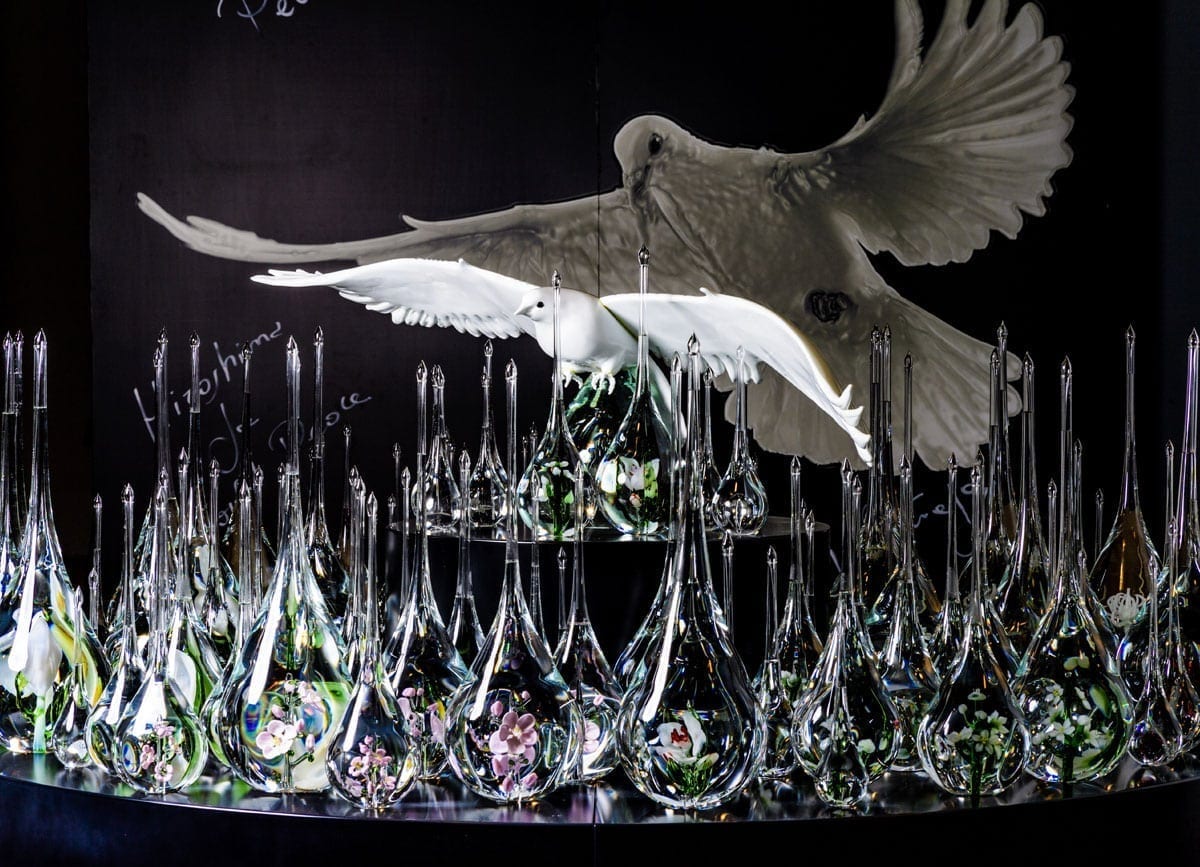
Spirit of Peace Hiroshima
25 November 2017On 24th November 2017, at the prestigious Hiroshima Moca Museum, the Spirit of Peace exhibition was opened. Spirit of Peace is inspired by an art project by Sandro Bottega and was hosted in three museums in Hirsohima. The mayor Kazumi Matsui supported this initiative and officially opened the exhibition which brings Italy and Japan together in the name of culture and peace. Sandro Bottega, with Monica Lisetto and Asako Hirano, explained the exhibition and the how the art pieces where created according to Murano glass tradition. The exhibition, scheduled from November 25th to December 10th, recorded a total attendance of 6,485 people. It has been divided into three sections, distributed in three different museums:
Spirit of Peace – Art in Grappa
At Moca Hiroshima City Museum of Contemporary Art. Artistic exhibition of 50 historic Bottega blown glass bottles. Each artistic bottle has been designed by Sandro Bottega, who found in Venice and Murano blown glass tradition his main source of inspiration. Some of these bottles are giant creations and are 1-meter-tall.
Spirit of Peace – Rinascita della speranza (Rebirth of Hope)
At Hiroshima Museum of Art. The exhibition consists in a blown glass transparent dove awaiting for peace (of nearly one meter), created by Master Pino Signoretto, and a hundred drop-shaped bottles reproducing the buds of hope. The transparent dove represents the rebirth of hope. The big bird rests on glass drops that symbolize tears and turn into rain which feeds life, represented by the buds.
Spirit of Peace – Volo di pace (Flight for Peace)
At Hiroshima Prefectural Art Museum. The exhibition consists in a white blown glass dove taking the flight for peace (of nearly one meter), created by Master Pino Signoretto, and a hundred drop-shaped bottles, 50 of which feature Japanese flowers on their inside, created by the masters at Alexander Bottega blown glass factory. The white dove takes the flight to bring its message of peace to the world. The glass drops feature camphor and oleander flowers, the first plants which bloomed after the nuclear disaster. These flowers are also included in Hiroshima city logo.
